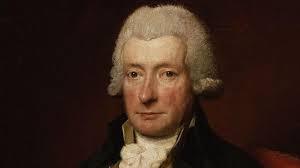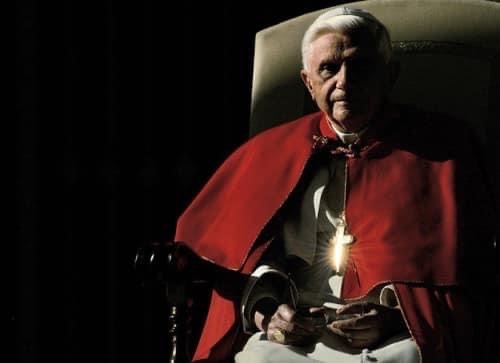#St Paul the Hermit
Explore tagged Tumblr posts
Text
SAINT OF THE DAY (January 15)

On January 15, the Catholic Church remembers Saint Paul of Thebes, whose life of solitude and penance gave inspiration to the monastic movement during its early years.
Surviving in the Egyptian desert on a small amount of daily food, St. Paul the Hermit lived in close communion with God.
Before the end of his life at age 113, he met with St. Anthony the Great, who led an early community of monks elsewhere in the Egyptian desert.
Born in approximately 230, the future hermit Paul received a solid religious and secular education but lost his parents at age 15.
During the year 250, Roman Emperor Decius carried out a notorious persecution of the Church, executing clergy and forcing laypersons to prove their loyalty by worshiping idols.
The state used torture, as well as the threat of death, to coerce believers into making pagan sacrifices.
Paul went into hiding during the Decian persecution but became aware of a family member's plan to betray him to the authorities.
The young man retreated to a remote desert location, where he discovered a large abandoned cave that had once been used as a facility for making counterfeit coins.
He found that he could survive on water from a spring. A raven brought him half a loaf of bread daily.
Forced into the wilderness by circumstance, Paul found that he loved the life of prayer and simplicity that it made possible.
Thus, he never returned to the outside world, even though he lived well into the era of the Church's legalization and acceptance by the Roman Empire.
Later on, his way of life inspired Catholics who sought a deeper relationship with God through spiritual discipline and isolation from the outside world.
One of these faithful was Anthony of Egypt, born in the vicinity of Cairo around 251, who also lived to an old age after deciding during his youth to live in the desert out of devotion to God.
Paul of Thebes is known to posterity because Anthony, around the year 342, was told in a dream about the older hermit's existence and went to find him.
A similar knowledge about Anthony had been mysteriously given to the earlier hermit.
Thus, when he appeared at Paul's cave, they greeted each other by name, though they had never met.
Out of contact with the Roman Empire for almost a century, Paul asked about its condition and whether paganism was still practiced.
He told Anthony how, for the last 60 years, a bird had brought him a ration of bread each day – a mode of subsistence also granted to the Old Testament prophet Elijah.
After 113 years, most of them spent in solitary devotion, Paul understood that he was nearing the end of his earthly life.
He asked Anthony to return to his own hermitage and bring back a cloak that had been given to the younger monk by the bishop St. Athanasius.
That heroically orthodox bishop had not yet been born when Paul first fled to the desert, and Anthony had never mentioned him or the cloak in question.
Amazed, Anthony paid reverence to Paul and set out to fulfill his request.
During the return trip, Anthony was shown a vision of St. Paul of Thebes' soul, glorified and ascending toward Heaven.
On returning to the first hermit's cave, he venerated the body of its inhabitant, wrapped him in Athanasius' cloak and carried him outdoors.
Saint Jerome, in his “Life of St. Paul the First Hermit,” attests that two lions arrived, demonstrated their reverence, and dug a grave for the saint.
Having given him Athanasius' cloak, St. Anthony took back to his hermitage the garment, which St. Paul of Thebes had woven for himself from palm leaves.
Anthony passed on the account of his journey and the saint's life to his own growing group of monastic disciples.
It was written down by St. Jerome around the year 375 – approximately 33 years after the death of the first hermit.
Venerated on the same day by Roman Catholics, Eastern Catholics and Eastern Orthodox Christians, St. Paul of Thebes is also the namesake of a Catholic monastic order – the Order of Saint Paul the First Hermit – founded in Hungary during the 13th century and still in operation.
2 notes
·
View notes
Text



#cathedral of st. paul the first hermit#san pablo unang ermitanyo#san pablo city#lagunaphilippines#pacf
0 notes
Text

Happy Feast Day
Saint Anthony the Abbot (St. Anthony the Great)
251-356
Feast Day: January 17
Patronage: bakers, farmers, farm animals, cemetery workers, basket weavers, monks, butchers, protection against skin rashes and diseases, epilepsy, amputees
Saint Anthony the Abbot was the founder of Christian monasticism and it’s first Abbot. Considered a Desert Father, he led a life of severe asceticism and strove for complete solitude. After hearing the Gospel of Matthew 19:21 he gave away all his possessions and lived as a hermit. Through his intercession, he brought about miraculous healings, comforts to the suffering and wise guidance to his followers. He was a friend of St. Paul the Hermit and St. Athanasius wrote his biography.
Prints, plaques & holy cards available for purchase. (website)
43 notes
·
View notes
Photo

Interview: Medieval Christian Art in the Levant
Medievalists retain misconceptions and myths about Oriental Christians. Indeed, the fact that the Middle East is the birthplace of Christianity is an afterthought for many. During the Middle Ages, Christians from different creeds and confessions lived in present-day Lebanon, Syria, Israel, and Palestine. Here, they constructed churches, monasteries, nunneries, and seminaries, which retain timeless artistic treasures and cultural riches.
James Blake Wiener speaks to Dr Mat Immerzee to clarify and contextualize the artistic and cultural heritage of medieval Christians who resided in what is now the Levant.
Dr Immerzee is a retired Assistant Professor at Universiteit Leiden and Director of the Paul van Moorsel Centre for Christian Art and Culture in the Middle East at Vrije Universiteit Amsterdam.
Saint Bacchus Fresco
James Gordon (CC BY)
JBW: The largest Christian community in what is present-day Lebanon is that of the Maronite Christians – they trace their origins to the 4th-century Syrian hermit, St. Maron (d. 410). The Maronite Church is an Eastern Catholic Syriac Church, using the Antiochian Rite, which has been in communion with Rome since 1182. Nonetheless, Maronites have kept their own unique traditions and practices.
What do you think differentiates medieval Maronite art and architecture from other Christian sects in the Levant? Due to a large degree of contact with traders and crusaders from Western Europe, I would suspect that we see “Western” influence reflected in Maronite edifices, mosaics, frescoes, and so forth.
MI: Especially in the 13th century, the oriental Christian communities enjoyed an impressive cultural flourishing which came to expression in the embellishment of churches with wall paintings, icons, sculpture, and woodwork and the production of illustrated manuscripts, but what remains today differs from on one community or region to another. In Lebanon, several dozens of decorated Maronite and Greek Orthodox churches are encountered in mountain villages and small towns in the vicinity of Jbeil (Byblos), Tripoli, the Qadisha Valley, and by exception in Beirut, but only a few still preserve substantial parts of their medieval decoration programs. Most churches fell into decay after the Christian cultural downfall in the early 14th century when the pressure to convert became stronger. While many church buildings were left in the state they were, others were renovated in the Ottoman period or more recently.
Christian Pilgrimage in the Middle Ages, c. 1000
Simeon Netchev (CC BY-NC-ND)
Remarkably Oriental Christian art displays broad uniformity with some regional and denominational differences. Cut off from the East Roman (Byzantine) Empire after the Arab conquest, it also escaped from the Byzantine iconoclastic movement (726-843 CE), which allowed the Middle Eastern Christians to develop their artistic legacy in their own way. An appealing subject is the introduction of warrior saints on horseback such as George and Theodore from about the 8th century. The West and the Byzantine Empire had to wait until the Crusader era to pick up this oriental motif and make it a worldwide success. But the borrowing was mutual. Mounted saints painted in Maronite, Melkite (Greek Orthodox), and Syriac Orthodox churches would increasingly be equipped with a chain coat and rendered with their feet in a forward thrust position, a battle technique developed within Norman military circles. Moreover, the Syrian equestrian saints Sergius and Bacchus were rendered holding a crossed ‘crusader’ banner, an attribute usually associated with Saint George, as if they were Crusader knights. Apart from these examples, there is little evidence of Oriental susceptibility to typically Latin subjects. We find Saint Lawrence of Rome represented in the Greek Orthodox Monastery of Our Lady near Kaftun, but this is exceptional.
Normally, one cannot tell from wall paintings in Lebanon to which community the church in question belonged. They all represented the same subjects and saints whose names are written in Greek and/or Syriac and may have recruited painters from the same artistic circles. Regarding architecture, the last word has not been said on this matter, because the documentation of medieval Lebanese church architecture is still in progress. Nevertheless, the build of some churches undeniably displays Western architectural influences; for example, the Maronite Church of Saint Sabas in Eddé al-Batrun is even plainly Romanesque in style.
JBW: Following my last question, is it then correct to assume that the Crusader lands – Edessa, Antioch, Tripoli, and Jerusalem – were quite receptive to Eastern Christian styles?
MI: That is difficult to tell because there is next to nothing left in the former County of Edessa and the Principality of Antioch. We do have some decorated churches in the former Kingdom of Jerusalem (Abu Gosh, Bethlehem), and here we see a strong focus on Byzantine craftsmanship and Latin usage. Apart from the preserved church embellishment in the Lebanese mountains, there are some fascinating, stylistically and thematically comparable instances across the border with Syria.
Saint Peter in Sinai
Wikipedia (Public Domain)
Although situated within Muslim territory, the Qalamun District between Damascus and Homs stands out for its well-established Greek Orthodox and Syriac Orthodox populations; and from the 18th century onwards, also Greek Catholics and Syrian Catholics. Interestingly, stylistic characteristics confirm that indigenous Syrian painters were also involved in the decoration inside Crusader fortresses such as Crac des Chevaliers and Margat Castle in Syria. It was obviously easier to contract local manpower than to find specialists in Europe.
JBW: The Byzantine Empire exuded tremendous political, cultural, and religious sway across the Levant throughout the Middle Ages; a sizable chunk of the Christian population in both Syria and Lebanon still adheres to the rituals of the Greek Orthodox Church even today.
MI: Leaving aside the cultural foundations laid before the Arab conquest, the contemporary Byzantine influences can hardly be overlooked. In the 12th and 13th centuries, itinerating Byzantine-trained painters worked on behalf of any well-paying client within Frankish and Muslim territory, from Cairo to Tabriz, irrespective of their denominational background. This partly explains the introduction of some ‘fashionable’ Byzantine subjects and the Byzantine brushwork of several mural paintings and icons. Made in the 1160s, the Byzantine-style mosaics in the Church of the Nativity at Bethlehem are believed to be the result of Latin-Byzantine cooperation at the highest levels; they exhale the propagandistic message of Christian unity. In 1204, however, the Crusaders would conquer Constantinople and substantial parts of the Byzantine Empire. The Venetians brought the bounty to Venice, and, surprisingly, also to Alexandria with the consent of the sultan in Cairo, intending to sell the objects in the Middle East. So much for Christian unity…
The Eastern Greek Orthodox Church has its roots in the Chalcedonian dispute about the human and divine nature of Christ in 451, which resulted in the dogmatic breakdown of the Byzantine Church into pro- and anti-Chalcedonian factions. Like the Maronites, the Melkites (‘royalists’) remained faithful to the former, official Byzantine standpoint, except for their oriental patriarchs in Antioch, Alexandria, and Jerusalem were officially allowed autonomy without direct interference from Constantinople. On the other hand, the Syriac Orthodox became dogmatically affiliated with the identically ‘Miaphysite’ Coptic, Ethiopian, and Armenian Churches. To complicate matters even more, part of the Greek Orthodox and Syriac Orthodox communities joined the Church of Rome in the 18th century. This resulted in the establishment of the Greek Catholic and Syriac Catholic Churches.
The Church of Nativity, Bethlehem
Konrad von Grünenberg (Public Domain)
JBW: Could you tell us a little bit more with regard to the Syriac Orthodox Church? If I’m not mistaken, there was a flourishing of the building of churches and monasteries by Syriac Orthodox communities once they fell under Muslim rule around 640.
MI: As a Miaphysite community, the Syriac Orthodox enjoyed the same protected status as other non-Muslim communities under Muslim rule. This allowed them to establish an independent Church hierarchy headed by their patriarch who nominally resided in Antioch, which covered large areas in Iran, Iraq, Turkey, and Syria. Some of their oldest churches, with architectural sculpture and occasionally a mosaic, are situated in the Tur Abdin region in Southeast Turkey. Remarkably, around the year 800, a group of monks from the city of Takrit (present-day Tikrit in Iraq) migrated to Egypt to establish a Syriac ‘colony’ within the Coptic monastic community. Their ‘Monastery of the Syrians’ (Deir al-Surian) still exists and is one of Middle Eastern Christianity’s key monuments for its architecture, wall paintings, icons, wood- and plasterwork ranging in date from the 7th to the 13th centuries. The monastery also houses an extensive manuscript collection. Another decorated monastery is the Monastery of St Moses (Deir Mar Musa; presently Syriac Catholic) near Nebk to the north of Damascus, where paintings from the 11th and 13th-centuries can still be seen. The Monastery of St Behnam (Deir Mar Behnam; presently Syriac Catholic) near Mosul is reputed for its 13th-century architectural sculpture and unique stucco relief, but unfortunately, a lot has been destroyed by ISIS warriors.
The Syriac Orthodox presence in Lebanon remained limited to a church dedicated to Saint Behnam in Tripoli, and the temporary use of a Maronite church dedicated to St Theodore at the village of Bahdeidat by refugees from the East who were on the run from the Mongols during the 1250s. This church still displays its complete decoration program from this period. It is impossible to tell which community arranged the refurbishment, but the addition of a donor figure in Western dress testifies to support from a (probably) local Frankish lord. Finally, the Syriac Orthodox also excelled in manuscript illumination, examples of which can be found in Western collections and the patriarchal library near Damascus.
JBW: As the Lebanese and Syrian Greek Orthodox Churches had fewer dealings with Western Europeans than the Maronite Church, does medieval Christian Orthodox art in Lebanon and Syria reflect and maintain the designs and styles of medieval Byzantium? If so, in what ways, and where do we see deviation or innovation?
MI: As I said before, Byzantine-trained artists have been surprisingly active in the Frankish states and beyond, especially during the 13th century. I prefer to label them as “Byzantine-trained” instead of “Byzantine,” because it is not always clear where they came from. To mention an example, painters from Cyprus still worked in the Byzantine artistic tradition but no longer fell under the authority of the emperor after the Crusader conquest of the island in 1291. Culturally they were still fully Byzantine, but, speaking in modern terms, they would have had the Frankish-Cypriot nationality. The little we can say from the preserved paintings is that some Cypriot artists traveled to the Levant in the aftermath of the power change in search of new clientele. It is unknown if they stayed or returned after the accomplishment of their tasks, but around the mid-13th century we see the birth of a ‘Syrian-Cypriot’ style which combines Byzantine painting techniques with typically Syrian formal features and designs; for example, in the afore-mentioned Monastery at Kaftun in Lebanon. Typically, instances of this blended art are not only encountered in Lebanon and Syria but also in Cyprus.
The Virgin and Child Mosaic, Hagia Sophia
Hagia Sophia Research Team (CC BY-NC-SA)
Focusing on the shared elements in Oriental Christian and Byzantine art, the example of apse decorations illustrates the resemblances and often also subtle differences. From the Early Christian period, the common composition in the apse behind the altar consisted of the mystical appearance of Christ (Christ in Glory) between the Four Living Creatures in the conch and the Virgin between saints, such as the apostles and Church fathers, in the lower zone. However, an early variant encountered in Egypt renders the biblical Vision of Ezekiel: here, Christ in Glory is placed on the fiery chariot the prophet saw. Recent research has brought to light that this variant was also applied in Syriac Orthodox churches in Turkey and Iraq as late as the 13th century. Medieval oriental conch paintings often combine Christ in Glory with the Deesis, that is, the Virgin and St John the Baptist pleading in favour of mankind. Whereas the Byzantines kept these subjects separated, the ‘Deesis-Vision’ is encountered from Egypt to Armenia and Georgia in churches of all denominations
JBW: One cannot discuss medieval Christian art in the Near East without making some mention of Armenians and Georgians. The first recorded Armenian pilgrimage occurred in the early 4th century, and Armenian Cilicia (1080-1375) flourished at the time of the Crusades. During the reign of Queen Tamar (r. 1184-1213), Georgia assumed the traditional role of the Byzantine crown as a protector of the Christians of the Middle East. Armenians and Georgians intermarried not only with one another but also with Byzantines and Crusaders.
Where is the medieval Armenian and Georgian presence the strongest in the Levant? Is it discernible?
Tomb of Saint Hripsime in Armenia
James Blake Wiener (CC BY-NC-SA)
MI: Medieval Armenian and Georgian art can be found in their homelands, but there are also surviving works testifying to their presence in the Levant and Egypt. Starting with the Armenians, they have always lived in groups dispersed throughout the Middle East, whereas in Jerusalem they have their own quarter. A 13th-century wooden door with typically Armenian ornamentation and inscriptions in the Church of the Nativity in Bethlehem testify to the interest Armenians took in the Holy Land. Further to the south, a 12th-century mural painting with Armenian inscriptions in the White Monastery near Sohag reminds us of the strong Armenian presence in Egypt under Fatimid rule during the 11th to 12th centuries. They had arrived in the wake of the rise of power of the Muslim Armenian warlord and later Vizir Badr al-Jamali, who seized all power in the Fatimid realm during the 1070s. He not only brought his own army consisting of Christian and Muslim Armenians but also made Egypt a safe home for Armenians from more troubled areas.
The Christian Armenians had their own monastery and used a number of churches in Egypt. However, these were appropriated by the Copts at the downfall of Fatimid power and the subsequent expulsion of all Armenians during the 1160s. The Armenian catholicos or head of Egypt is known to have left for Jerusalem taking with him all the church treasures.
At the White Monastery, a mural was made by an artist named Theodore originating from a village in Southeastern Turkey on behalf of Armenian miners who were apparently allowed to use the monastery’s church. It is hard to believe that Theodore came all the way to accomplish just one task in this remote place. There can be no doubt that he decorated more Armenian churches during his stay in Egypt, but the Copts thoroughly wiped out all remaining traces of their previous owners.
The Georgian presence was limited to Jerusalem, where they owned the Monastery of the Holy Cross until it was taken over by the Greek Orthodox in the 17th century. In the monastery’s church, a series of 14th-century paintings with Georgian inscriptions are a reminder of this period. In addition, an icon representing St George and scenes of his life painted during the early 13th century, and kept in the Monastery of Saint Catherine in the Sinai, was a gift from a Georgian monk, who is himself depicted prostrating at the saint’s feet.
St. Catherine's Monastery, Sinai
Marc!D (CC BY-NC-ND)
JBW: Because we touched upon the incorporation of outside artistic influences coming from Western Europe and Byzantium to the Levant, I wondered if you might offer a final comment or two on those architectural or artistic influences coming from the Arab World or even the wider Islamic world.
To what extent did Levantine Christians – who often lived near their Muslim neighbors – adopt or assimilate Islamic styles of art and architecture?
MI: The earliest examples of Islamic art from the Umayyad era display strong influences of Late Antiquity, which in turn had also been the source of inspiration to early Christian art. Over the course of time, these artistic relatives would gradually grow apart to meet again on specific occasions. The earliest example of Islamic-inspired Christian art is the purely ornamental stucco reliefs in the Monastery of the Syrians in Egypt. Constructed during the early 10th century by the Abbot Moses of Nisibis. Its plastered altar room exudes the same atmosphere as houses in the 9th-century Abbasid capital of Samarra and the similarly decorated Mosque of Ibn Tulun (an Abbasid prince who came to Egypt as its governor) in Cairo.
The Mosque of Ibn Tulun, Cairo Egypt
Berthold Werner (CC BY)
The decoration of Fatimid-era sanctuary screens in Coptic churches and woodwork from Egyptian Islamic, Jewish, and secular contexts are fully interchangeable; likewise, 13th-century architectural sculpture, manuscript illustrations, and metalwork from the Mosul area display the same shared stylistic and iconographic artistic language. Broadly speaking, we are obviously dealing with craftsmen working on behalf of different parties at the local level regardless of their religious backgrounds. Occasionally, one comes across ‘Islamic’ ornaments in wall paintings, but the overall impression is that Christian painting was subject to blatant conservatism when compared to more fashionable, ‘neutral’ items of interior decoration. The only Arabic inscriptions found in mural paintings concern texts commemorating building or refurbishment activities, or graffiti left by visitors. There obviously was a difference in status between the vernacular spoken language and the Church’s Greek and Syriac.
JBW: Dr. Mat Immerzeel, thanks so much for your time and consideration.
MI: You are welcome; it is my pleasure to contribute to your magazine.
Mat Immerzeel has been active in the Middle East since 1989, first in Egypt, then in Syria and Lebanon, and recently in Cyprus. His main field of study is the material culture of Oriental Christian communities from the 3rd century to the present. In particular, he studies wall paintings, icons, stone and plaster sculpture, woodwork, and manuscript illustrations. He has participated in research projects focusing on the formation of religious communal identity, the training of local collection curators, and restoration and documentation campaigns. He is the Director of the Paul van Moorsel Centre for Christian Art and Culture in the Middle East and editor-in-chief of the journal Eastern Christian Art (ECA) published by Peeters Publishers in Leuven, the Netherlands.
Continue reading...
40 notes
·
View notes
Text
So I found out there were 164 songs that were banned the day after 9/11 so i got curious. Here are all the ones that were banned.

3 Doors Down – Duck and Run
311 – Down
AC/DC – Shot Down in Flames
AC/DC – Shoot to Thrill
AC/DC – Dirty Deeds
AC/DC – Highway to Hell
AC/DC – Safe in New York City
AC/DC – TNT
AC/DC – Hell’s Bells
Ad Libs – The Boy from New York City
Alanis Morissette – Ironic
Alice in Chains – Rooster
Alice in Chains – Sea of Sorrow
Alice in Chains – Down in a Hole
Alice in Chains – Them Bones
Alien Ant Farm – Smooth Criminal
Animals – We Gotta Get Out of This Place
Arthur Brown – Fire
Bangles – Walk Like an Egyptian
Barenaked Ladies – Falling for the First Time
Barry McGuire – Eve of Destruction
Beastie Boys – Sure Shot
Beastie Boys – Sabotage
The Beatles – A Day in the Life
The Beatles – Lucy in the Sky with Diamonds
The Beatles – Ticket To Ride
The Beatles – Obla Di, Obla Da
Billy Joel – Only the Good Die Young
Black Sabbath – War Pigs
Black Sabbath – Sabbath Bloody Sabbath
Blood Sweat and Tears – And When I Die
Blue Oyster Cult – Burnin’ For You
Bob Dylan / Guns N’ Roses – Knockin’ on Heaven’s Door
Bobby Darin – Mack the Knife
Boston – Smokin’
Brooklyn Bridge – Worst That Could Happen
Bruce Springsteen – I’m On Fire
Bruce Springsteen – Goin’ Down
Bruce Springstein – War
Buddy Holly and the Crickets – That’ll Be the Day
Bush – Speed Kills
Carole King – I Feel the Earth Move
Cat Stevens – Peace Train
Cat Stevens – Morning Has Broken
Chi-Lites – Have You Seen Her
The Clash – Rock the Casbah
Creedence Clearwater Revival – Travelin’ Band
The Cult – Fire Woman
Dave Clark Five – Bits and Pieces
Dave Matthews Band – Crash Into Me
Dio – Holy Diver
Don McLean – American Pie
The Doors – The End
Drifters – On Broadway
Drowning Pool – Bodies
Edwin Starr – War
Elton John – Benny & The Jets
Elton John – Daniel
Elton John – Rocket Man
Elvis – (You’re the) Devil in Disguise
Everclear – Santa Monica
Filter – Hey Man, Nice Shot
Fontella Bass – Rescue Me
Foo Fighters – Learn to Fly
Jimi Hendrix – Hey Joe
Frank Sinatra – New York, New York
Fuel – Bad Day
The Gap Band – You Dropped a Bomb On Me
Godsmack – Bad Religion
Green Day – Brain Stew
Happenings – See You in September
Herman’s Hermits – Wonderful World
Hollies – He Ain’t Heavy, He’s My Brother
J. Frank Wilson – Last Kiss
Jackson Brown – Doctor My Eyes
James Taylor – Fire and Rain
Jan and Dean – Dead Man’s Curve
Jerry Lee Lewis – Great Balls of Fire
Jimi Hendrix – Hey Joe
John Lennon – Imagine
John Mellencamp – Crumbling Down
John Mellencamp – I’m On Fire
John Parr – St. Elmo’s Fire
Judas Priest – Some Heads Are Gonna Roll
Kansas – Dust in the Wind
Korn – Falling Away From Me
Led Zeppelin – Stairway to Heaven
Lenny Kravitz – Fly Away
Limp Bizkit – Break Stuff
Local H – Bound for the Floor
Los Bravos – Black is Black
Louis Armstrong – What A Wonderful World
Lynyrd Skynyrd – Tuesday’s Gone
Martha & the Vandellas – Nowhere to Run
Martha & the Vandellas – Dancing in the Streets
Megadeth – Dread and the Fugitive
Megadeth – Sweating Bullets
Metallica – Seek and Destroy
Metallica – Harvester or Sorrow
Metallica – Enter Sandman
Metallica – Fade to Black
Mitch Ryder and the Detroit Wheels – Devil with the Blue Dress
Mudvayne – Death Blooms
Neil Diamond – America
Nina – 99 Luft Balloons/99 Red Balloons
Nine Inch Nails – Head Like a Hole
Norman Greenbaum – Spirit in the Sky
Oingo Boingo – Dead Man’s Party
Ozzy Osbourne – Suicide Solution
Paper Lace – The Night Chicago Died
Pat Benatar – Hit Me with Your Best Shot
Pat Benatar – Love is a Battlefield
Paul McCartney and Wings – Live and Let Die
Peter Gabriel – When You’re Falling
Peter and Gordon – I Go To Pieces
Peter and Gordon – A World Without Love
Peter Paul and Mary – Blowin’ in the Wind
Peter Paul and Mary – Leavin’ on a Jet Plane
Petula Clark – A Sign of the Times
Phil Collins – In the Air Tonight
Pink Floyd – Run Like Hell
Pink Floyd – Mother
P.O.D. – Boom
Pretenders – My City Was Gone
Queen – Another One Bites the Dust
Queen – Killer Queen
All Rage Against The Machine songs
Red Hot Chili Peppers – Aeroplane
Red Hot Chili Peppers – Under the Bridge
R.E.M. – It’s the End of the World as We Know It
Rickey Nelson – Travelin’ Man
Rolling Stones – Ruby Tuesday
Saliva – Click Click Boom
Sam Cooke – Wonderful World
Santana – Evil Ways
Savage Garden – Crash and Burn
Shelly Fabares – Johnny Angel
Simon And Garfunkel – Bridge Over Troubled Water
Skeeter Davis – End of the World
Slipknot – Left Behind
Slipknot – Wait and Bleed
Smashing Pumpkins – Bullet With Butterfly Wings
Soundgarden – Blow Up the Outside World
Soundgarden – Fell on Black Days
Soundgarden – Black Hole Sun
Steam – Na Na Na Na Hey Hey
Steve Miller – Jet Airliner
Stone Temple Pilots – Big Bang Baby
Stone Temple Pilots – Dead and Bloated
Sugar Ray – Fly
Surfaris – Wipeou
System Of A Down – Chop Suey!
Talking Heads – Burning Down the House
Temple of the Dog – Say Hello to Heaven
Third Eye Blind – Jumper
Three Degrees – When Will I See You Again
Tom Petty – Free Fallin’
Tool – Intolerance
Tramps – Disco Inferno
U2 – Sunday Bloody Sunday
Van Halen – Dancing In The Street
Van Halen – Jump
Yager and Evans – In the Year 2525
Youngbloods – Get Together
Zombies – She’s Not There
13 notes
·
View notes
Text
Today in Christian History

Today is Thursday, April 25th, 2024. It is the 116th day of the year in the Gregorian calendar; Because it is a leap year, 250 days remain until the end of the year.
62: Death of Mark the Gospel writer while imprisoned in Alexandria in the eighth year of Nero, according to Vetus martyrologium romanum (an old Roman collation of martyr accounts).
799: Pope Leo III is attacked, his eyes stabbed, and his tongue torn. He recovers and later crowns Charlemagne as emperor.
1449: The ineffectual Council of Basel ends.
1479: Death of Sylvester of Obnorsk, a Russian Orthodox hermit who had lived off roots and bark. Eventually he had established a monastery.
1564: John Calvin, reformer of Geneva, dictates his last will and testament to notary Peter Chenalat.
1595: Death from a fever in the convent of St. Onofrio of Italian poet Torquato Tasso. Ironically, he was supposed to receive a laurel from the pope on this day in recognition of his epic poems, among which Jerusalem Delivered had been the most acclaimed.
1735: Death at Epworth, England, of Samuel Wesley, curate, author, and father of Methodist revival leaders John and Charles Wesley.
1800: Death at East Dereham, Norfolk, England, of English poet William Cowper (pictured above). Despite lifelong depression, he had produced enduring hymns, including, “Oh For a Closer Walk with God” and “There is a Fountain Filled with Blood.” Dementia had led him to believe he was damned.
1879: Consecration of J. B. Lightfoot as Bishop of Durham. A renowned English New Testament scholar, he had left Cambridge and a life of scholarship to devote the remaining ten years of his life to church administration.
1889: Death at Mt. Pleasant, Michigan, of Anzentia Igene Perry Chapman. A member of the Free Methodist Church, she wrote a number of hymns, including, “Thou Shalt Rest at Eve,” and “We’ll Never Say Goodbye.”
1917: Ordination of Paul Sasaki as a priest in the Anglican Church in Japan. He will become bishop of Nippon Sei Ko Kei (an independent church organization within the Anglican Communion), and suffer imprisonment for his refusal to bring Nippon Sei Ko Kei under the authority of a government-ordered church coalition.
15 notes
·
View notes
Text










Captures de l’Ep. 4.10 : Simulations / Spin Doctor (2000) de la série Le Caméléon (V.O. : The Pretender)

Distribution : - Rex Linn, qui avait déjà croisé Paul Dillon dans le film L’Ile aux Pirates (1995) et le recroisera dans la série Les Experts : Miami (2004), et retrouvera Michael T Weiss dans l'Episode incursion 4.10 de la série Profiler; - Robert Davi, qui avait déjà croisé Richard Marcus dans l'Ep. 1.07 de la série Hôpital St. Elsewhere (1982), de la série Profiler qui a 3 épisodes incursion avec Michael T Weiss, et qui croisera Jason Brooks dans Alerte Astéroïde (2014); - Max Martini, qui croisera Jeffrey Donovan dans l'Ep. 2.07 de la série Burn Notice, qui participe également à l'incursion 4.10 de la série Profiler et avait déjà croisé Harve Presnell dans le film Il Faut sauver le Soldat Ryan (1998); - Jamie Luner, de la série Melrose Place, et qui croisera Jason Brooks dans le TVfilm N'oublie jamais (2017); ...

Todd Baxter : "Je veux faire quelque chose qui compte... C'est ok selon vous ?"
Jarod : "Hoquey.. ça c'est ... c'est un sport je crois ?"

journaliste : "La réponse se trouve derrière cette porte"

Jarod : "Pourquoi tu m'as aidé ?"
Todd Baxter (réfléchi) : " Mon coeur me dit que je peux te faire confiance... Ah attend (fouille dans une poche et lui tend un billet) Prend ça."
Jarod : "Ah non non non non non Je ne peux pas accepter, tu m'as déjà tellement aidé !
Todd Baxter (déposant le billet dans les mains de Jarod) : Si j'insiste. Tu dégusteras une glace à ma santé !"
Jarod (détaillant le billet, étonné) : "Déguster une glace ? ... Est-ce que c'est bon ?"
Todd Baxter (amusé, riant) : "Tout ce qu'il y a de délicieux ! ... Quelque chose me dit que tu as vécu en hermite Jarod... Si tu vas à Washington, passe me voir :)"
Jarod : "Avec plaisir.... Je te remercie."

B. Malone : "La Vérité ? C'est ce que tout le monde recherche."

M. Parker (insistant) : "Jarod reste l'avenir du Centre"
Mlle Parker (pas convaincue) : "Pourquoi ?"
M. Parker (crispé, fuyant) : " C'est notre plus bel exploit, un atout sans égal..."

Sydney : "Menteur ... ! TOUS DES MENTEURS !!! ... MEEENNNNTTTEEEUUUURRRRRRS !!!!!!!! "

Mlle Parker : "J'ai toujours su que c'était un savan fou"
Broots : "C'est le Centre qui nous rend fou."

Agent Linden : "On croit devoir abandonner la partie quand on sent qu'on n'a plus d'atout."

Il s'était déjà infiltré au F.B.I. dans :

source : imdb

Saison 4 : Episodes 01 - 03 - 04 - 05 - 07 - 08 - 09 - 10 - 11 - 13 - 15 - 16 - 18 - 19 - 20.
#le cameleon#the pretender#simulations#spin doctor#tasse#2000#the pretender lives#saison 4#season 4#episode 10#fbi#vérité#glace#folie#rex linn#profiler#max martini#jamie luner
11 notes
·
View notes
Text
01 Painting, Religious Art, Francesco Guarino's Saint Anthony Abbot and the Centaur, with footnotes # 51
Francesco GuarinoSaint Anthony Abbot and the Centaur, c. 1642Oil on canvas17 1/2 by 26 in.; 44.5 by 66 cm.Private collection Sold for 40.625 USD in Jan 2011 The life of St Anthony Abbot was popularised during the thirteenth century by Jacopo da Voragine’s Golden Legend. Towards the end of his life, while on his way to visit St Paul the Hermit, who lived in the wilderness, St Anthony met a…

View On WordPress
#Art#Biography#Centaur#EGYPTIAN#Fine Art#footnotes#Francesco Guarino#History#mythology#Paintings#Ptolemaic dynasty#religion#RELIGIOUS#Saint#Saint Anthony Abbot#Zaidan
2 notes
·
View notes
Text
SAINTS&READING: FRIDAY, OCTOBER 25, 2024
october 12_october 26
St MARTIN THE MERCIFUL, BISHOP OF TOURS (France_397)

Saint Martin the Merciful, Bishop of Tours, was born at Sabaria in Pannonia (modern Hungary) in 316. Since his father was a Roman officer, he also was obliged to serve in the army. Martin did so unwillingly, for he considered himself a soldier of Christ, though he was still a catechumen.
At the gates of Amiens, he saw a beggar shivering in the severe winter cold, so he cut his cloak in two and gave half to the beggar. That night, the Lord Jesus Christ appeared to the saint wearing Martin’s cloak. He heard the Savior say to the angels surrounding Him, “Martin is only a catechumen, but he has clothed Me with this garment.” The saint was baptized soon after this, and reluctantly remained in the army.
Two years later, the barbarians invaded Gaul and Martin asked permission to resign his commission for religious reasons. The commander charged him with cowardice. Saint Martin demonstrated his courage by offering to stand unarmed in the front line of battle, trusting in the power of the Cross to protect him. The next day, the barbarians surrendered without a fight, and Martin was allowed to leave the army.
He traveled to various places during the next few years, spending some time as a hermit on an island off Italy. He became friendly with Saint Hilary, Bishop of Poitiers (January 14), who made Martin an exorcist. After several years of the ascetic life, Saint Martin was chosen to be Bishop of Tours in 371. As bishop, Saint Martin did not give up his monastic life, and the place where he settled outside Tours became a monastery. In fact, he is regarded as the founder of monasticism in France. He conversed with angels, and had visions of Saints Peter and Paul (June 29) and of other saints. He is called the Merciful because of his generosity and care for the poor, and he received the grace to work miracles.
After a life of devoted service to Christ and His Church, the saint fell ill at Candes, a village in his diocese, where he died on November 8, 397. He was buried three days later (his present Feast) at Tours. During the Middle Ages, many Western churches were dedicated to Saint Martin, including Saint Martin’s in Canterbury, and Saint Martin-in-the-Fields in London.
In 1008, a cathedral was built at Tours over the relics of Saint Martin. This cathedral was destroyed in 1793 during the French Revolution, together with the relics of Saint Martin and Saint Gregory of Tours (November 17). A new cathedral was built on the site many years later. Some fragments of the relics of Saint Martin were recovered and placed in the cathedral, but nothing remains of Saint Gregory’s relics.
Saint Martin’s name appears on many Greek and Russian calendars. His commemoration on October 12 in the Russian calendar seems to be an error since ancient sources give the November date.
VENERABLE SYMEON, THE NEW THEOLOGIAN (1021)

Saint Simeon the New Theologian was born in 949 in Galatea (Paphlagonia) and educated at Constantinople. His father prepared him for a career in court, and the youth occupied a high position in the imperial court for a while. When he was fourteen, he met the renowned Elder Simeon the Pious at the Studion Monastery, who would majorly influence his spiritual development. He remained in the world for several years, preparing himself for the monastic life under the Elder’s guidance, and finally entered the monastery at the age of 27.
Saint Simeon the Pious recommended to the young man the writings of Saint Mark the Ascetic (March 5) and other spiritual writers. He read these books attentively and tried to put into practice what he read. Three points made by Saint Mark in his work “On the Spiritual Law” (see Vol. I of the English Philokalia) particularly impressed him. First, you should listen to your conscience and do what it tells you if you wish your soul to be healed (Philokalia, p. 115). Second, only by fulfilling the commandments can one obtain the activity of the Holy Spirit. Thirdly, one who prays only with the body and without spiritual knowledge is like the blind man who cried out, “Son of David, have mercy upon me” (Luke 18:38) (Philokalia, p. 111). When the blind man received his sight, however, he called Christ the Son of God (John 9:38).
Saint Simeon was wounded with a love for spiritual beauty, and tried to acquire it. In addition to the Rule given him by his Elder, his conscience told him to add a few more Psalms and prostrations, and to repeat constantly, “Lord Jesus Christ, have mercy upon me.” Naturally, he heeded his conscience.
During the day, he cared for the needs of people living in the palace of Patricius. At night, his prayers grew longer and he remained praying until midnight. Once, as he was praying in this way, a most brilliant divine radiance descended upon him and filled the room. He saw nothing but light all around him, and he was not even aware of the ground beneath his feet.
It seemed to him that he himself became light. Then his mind rose upward to the heavens, and he saw a second light brighter than the light which surrounded him. Then, on the edge of this second light, he seemed to see Saint Simeon the Pious, who had given him Saint Mark the Ascetic to read.
Seven years after this vision, Saint Simeon entered the monastery. There he increased his fasting and vigilance, and learned to renounce his own will.
The Enemy of our salvation stirred up the brethren of the monastery against Saint Simeon, who was indifferent to the praises or reproaches of others. Because of the increased discontent in the monastery, Saint Simeon was sent to the Monastery of Saint Mamas in Constantinople.
There he was tonsured into the monastic schema, and increased his spiritual struggles. He attained to a high spiritual level, and increased his knowledge of spiritual things through reading the Holy Scriptures and the writings of the Fathers, as well as in conversation with holy Elders.
Around the year 980, Saint Simeon was made igumen of the monastery of Saint Mamas and continued in this office for twenty-five years. He repaired and restored the monastery, which had suffered from neglect, and also brought order to the life of the monks.
The strict monastic discipline, for which Saint Simeon strove, led to great dissatisfaction among the brethren. Once, after Liturgy, some of the monks attacked him and nearly killed him. When the Patriarch of Constantinople expelled them from the monastery and wanted to hand them over to the civil authorities, Saint Simeon asked that they be treated with leniency and be permitted to live in the world.
About the year 1005, Saint Simeon resigned his position as igumen in favor of Arsenius, while he himself settled near the monastery in peace. There he composed his theological works, portions of which appear in the Philokalia.
The chief theme of his works is the hidden activity of spiritual perfection, and the struggle against the passions and sinful thoughts. He wrote instructions for monks: “Theological and Practical Chapters,” “A Treatise on the Three Methods of Prayer,” (in Vol. IV of the English Philokalia) and “A Treatise on Faith.” Moreover, Saint Simeon was an outstanding church poet. He also wrote “Hymns of Divine Love,” about seventy poems filled with profound prayerful meditations.
The sublime teachings of Saint Simeon about the mysteries of mental prayer and spiritual struggle have earned him the title “the New Theologian.” These teachings were not the invention of Saint Simeon, but they had merely been forgotten over time.
Some of these teachings seemed unacceptable and strange to his contemporaries. This led to conflict with Constantinople’s church authorities, and Saint Simeon was banished from the city. He withdrew across the Bosphorus and settled in the ancient monastery of Saint Makrina.
The saint peacefully fell asleep in the Lord in the year 1021. During his life he received the gift of working miracles. Numerous miracles also took place after his death; one of them was the miraculous discovery of his icon.
His Life was written by his cell-attendant and disciple, Saint Nicetas Stethatos.
Since March 12 falls during Great Lent, Saint Simeon’s Feast is transferred to October 12.


Ephesians 6:18-24
18 praying always with all prayer and supplication in the Spirit, being watchful to this end with all perseverance and supplication for all the saints- 19 and for me, that utterance may be given to me, that I may open my mouth boldly to make known the mystery of the gospel, 20 for which I am an ambassador in chains; that in it I may speak boldly, as I ought to speak. 21 But that you also may know my affairs and how I am doing, Tychicus, a beloved brother, and faithful minister in the Lord, will make all things known to you; 22 whom I have sent to you for this very purpose, that you may know our affairs, and that he may comfort your hearts. 23 Peace to the brethren, and love with faith, from God the Father and the Lord Jesus Christ. 24 Grace be with all those who love our Lord Jesus Christ sincerely. Amen.
Luke 9:12-18
12 When the day began to wear away, the twelve came and said to Him, "Send the multitude away, that they may go into the surrounding towns and country, and lodge and get provisions; for we are in a deserted place here." 13 But He told them, "You give them something to eat." And they said, "We have no more than five loaves and two fish unless we go and buy food for all these people." 14 For there were about five thousand men. Then He said to His disciples, "Make them sit down in groups of fifty." 15 And they did so and made them all sit down. 16 Then He took the five loaves and the two fish, and looking up to heaven, He blessed and broke them, and gave them to the disciples to set before the multitude. 17 So they all ate and were filled, and they took twelve baskets of the leftover fragments. 18 And it happened, as He was alone praying, that His disciples joined Him,
#orthodoxy#orthodoxchristianity#easternorthodoxchurch#originofchristianity#spirituality#holyscriptures#gospel#bible#wisdom#faith#saints
3 notes
·
View notes
Text
Our Lady of Prompt Succour, Notre-Dame de Banneux / Our Lady of Banneux, St Paul the Hermit, St Macarius of Egypt, St Maurus and all the Saints for 15 January
Our Lady of Prompt Succour, New Orleans, USA (1809) – 8 January and 15 January:Such wonderful miracles – read about the Marian Patron of Louisiana here:https://anastpaul.com/2019/01/08/memorials-of-the-saints-8-january/ Notre-Dame de Banneux / Our Lady of Banneux, Belgium (under 2 Titles – Notre Dame des Pauvres / Our Lady of the Poor and Reine des Nations / Queen of Nations) (15 January – 2…

View On WordPress
#ourladyofbanneux#ourladyofpromptsuccour#saints15january#stbonitusofclermont#stmacarius#stmacariusofegypt#stmaurus#stpaulthehermit#stromedioofnonsberg
10 notes
·
View notes
Text
SAINT OF THE DAY (January 28)

On January 28, the Roman Catholic Church celebrates Saint Thomas Aquinas, the 13th-century theologian who showed that the Catholic faith is in harmony with philosophy and all other branches of knowledge.
Blessed John Paul II, in his 1998 letter “Fides et Ratio,” said:
"St. Thomas had the great merit of giving pride of place to the harmony, which exists between faith and reason, knowing that both the light of reason and the light of faith come from God … Hence there can be no contradiction between them.”
Thomas was born during 1225 into a noble family, having relatives among the rulers of the Holy Roman Empire.
His father Landulph was the Count of Aquino and his mother Theodora, the Countess of Teano.
At age five, Thomas was sent to study at Monte Cassino, the abbey founded by St. Benedict.
The boy's intellectual gifts and serious disposition impressed the monks, who urged his father to place him in a university by the time he was 10.
At the University of Naples, he learned philosophy and rhetoric while taking care to preserve his morals against corruption by other students.
It is said that a hermit, before Thomas' birth, told Theodora that she would have a son who would enter the Dominican Order “and so great will be his learning and sanctity that in his day, no one will be found to equal him.”
In his adolescence, Thomas' friendship with a holy Dominican inspired him to join them.
His family, however, did not envision the brilliant young man as a penniless and celibate preacher.
His brothers kidnapped him from the Dominicans, took him to the family's castle, and at one point even sent a woman to seduce him – whom Thomas drove out by brandishing a poker from the fireplace.
Under pressure from both the Pope and the Holy Roman Emperor, Thomas' brothers allowed him to escape from captivity.
He traveled to Rome and received the Pope's blessing upon his vocation, which would soon take him to Paris to study with the theologian later canonized as Saint Albert the Great.
Thomas' silent demeanor caused other students to nickname him “the Dumb Ox.”
Albert, however, discovered that the young man was a brilliant thinker and proclaimed: “We call him the Dumb Ox, but he will give such a bellow in learning as will be heard all over the world.”
By the time he was 23, Thomas was teaching alongside his mentor at the University of Cologne.
During 1248, he published his first commentaries on the pre-Christian Greek philosopher Aristotle, whose insights on nature, logic and metaphysics would inform Thomas' approach to Catholic theology.
Around the middle of the century, Thomas was ordained to the priesthood in which he showed great reverence for the liturgy and skill as a homilist.
In keeping with the Dominican Order's charism for preaching, he strove to bring his own family to a sincere practice of the faith and largely succeeded.
St. Thomas' best-known achievements, however, are his works of theology.
These include the Summa Contra Gentiles, the Compendium Theologiae, and the great Summa Theologica — which was placed on the altar along with the Bible at the 16th-century Council of Trent for easy reference during discussions.
In December 1273, however, the scholar proclaimed that he could write no more, following a mystical experience in which he said he had “seen things that make my writings look like straw.”
But he complied with a request to attend the Council of Lyon to help reunite the Latin and Greek churches.
On his way there, however, Thomas became ill and stopped at a Cistercian abbey.
The monks treated him with reverence, and it was to them that he dictated a final work of theology: a commentary on the Old Testament's Song of Songs.
The saint did not live to finish this commentary, however. Nearing death, he made a final confession and asked for the Eucharist to be brought to him.
In its presence, he declared: “I adore you, my God and my Redeemer … for whose honor I have studied, labored, preached, and taught.”
“I hope I have never advanced any tenet as your word, which I had not learned from you,” he told God, before making his last communion.
“If through ignorance I have done otherwise, I revoke everything of that kind, and submit all my writings to the judgment of the holy Roman Church.”
His last words were addressed to one of the Cistercians who asked for a word of spiritual guidance.
“Be assured that he who shall always walk faithfully in (God's) presence, always ready to give him an account of all his actions, shall never be separated from him by consenting to sin,” he declared.
Thomas Aquinas died on 7 March 1274.
He was canonized by Pope John XXII on 18 July 1323 and made a Doctor of the Church in 1567.
In 1965, the Second Vatican Council taught that seminarians should learn “under the guidance of St. Thomas in order to illumine the mysteries of salvation as completely as possible.”
Thomas Aquinas is known primarily as a brilliant theologian and philosopher.
He is the patron saint of universities and scholars. He also serves as an ambassador for education and serves as a wonderful role model for our children.
5 notes
·
View notes
Text

Youssef Antoun Makhlouf was born in 1828, in Bekaa Kafra (North Lebanon). He had a true Christian upbringing, which had given him a passion for prayer. Then he followed his two hermit uncles in the hermitage of the St Antonious Kozhaya monastery and was converted to monastic and hermetical life.
In 1851, he left his family village and headed for the Our Lady of Maifouk monastery to spend his first monastic year, and then he went to the St Maron monastery in Annaya, where he entered the Maronite Order, carrying the name Charbel, a name of one of the Antioch church martyrs of the second century. On November 1st. 1853, he exposed his ceremonial vows in St Maron’s monastery - Annaya. Then he completed his theological studies in the St Kobrianous and Justina monastery in Kfifan, Batroun.
He was ordained a priest in Bkerky, the Maronite Patriarchate, on July 23rd, 1859. He lived 16 years in the St Maron's monastery – Annaya. From there, he entered, on February 15th, 1875, the St Peter & Paul hermitage, which belongs to the monastery. He was a typical saint and hermit, who spent his time praying and worshipping. Rarely had he left the hermitage where he followed the way of the saintly hermits in prayers, life and practice.
St Charbel lived in the hermitage for 23 years. On December 16th, 1898 he was struck with an illness while performing the holy mass. He died on Christmas' eve, December 24th, 1898, and was buried in the St Maron monastery cemetery in Annaya.
Few months later, dazzling lights were seen around the grave. From there, his corpse, which had been secreting sweat and blood, was transferred into a special coffin. Hordes of pilgrims started swarming the place to get his intercession. And through this intercession, God blessed many people with recovery and spiritual graces.
In 1925, his beatification and canonization were proposed for declaration by Pope Pious XI. In 1950, the grave was opened in the presence of an official committee which included doctors who verified the soundness of the body. After the grave had been opened and inspected, the variety of healing incidents amazingly multiplied. A multitude of pilgrims from different religious facets started flocking to the Annaya monastery to get the saint's intercession.
Prodigies reached beyond the Lebanese borders. This unique phenomenon caused a moral revolution, the return to faith and the reviving of the virtues of the soul.
5 notes
·
View notes
Text

#san pablo city#san pablo#san pablo laguna#san pablo cathedral#cathedral of st. paul the first hermit#san pablo unang ermitanyo#pacf#catholic
0 notes
Text

Happy Feast Day
Saint Paul the Hermit
227-342
Feast day: January 15
Patronage: basket weavers, clothing industry, hermits, weavers
Saint Paul the Hermit, also called Paul of Thebes, a well educated Egyptian, was the first Christian hermit, embracing the life of solitude and penance. He fled to the desert to circumvent the Christian persecution of Decius and from plans of his brother to report him to authorities to gain control of his property. Paul lived as a vegetarian, using the leaves of a Palm tree for clothing. It’s said that a raven supplied him with bread. St. Anthony of Egypt was good friends with him and buried him, wrapped in a cloak given by St. Athanasius. St. Jerome wrote his biography.
Prints, plaques & holy cards available for purchase. (website)
42 notes
·
View notes
Text

Can the Ladder, a work written by a hermit monk who lived 1,400 years ago, say something to us today? Can the existential journey of a man who lived his entire life on Mount Sinai in such a distant time be relevant to us?
Dear Brothers and Sisters,
After 20 Catecheses dedicated to the Apostle Paul, today I would like to return to presenting the great writers of the Church of the East and of the West in the Middle Ages. And I am proposing the figure of John known as Climacus, a Latin transliteration of the Greek term klimakos, which means of the ladder (klimax). This is the title of his most important work in which he describes the ladder of human life ascending towards God. He was born in about 575 a.d. He lived, therefore, during the years in which Byzantium, the capital of the Roman Empire of the East, experienced the greatest crisis in its history. The geographical situation of the Empire suddenly changed and the torrent of barbarian invasions swept away all its structures. Only the structure of the Church withstood them, continuing in these difficult times to carry out her missionary, human, social and cultural action, especially through the network of monasteries in which great religious figures such as, precisely, John Climacus were active.
John lived and told of his spiritual experiences in the Mountains of Sinai, where Moses encountered God and Elijah heard his voice. Information on him has been preserved in a brief Life (PG 88, 596-608), written by a monk, Daniel of Raithu. At the age of 16, John, who had become a monk on Mount Sinai, made himself a disciple of Abba Martyr, an "elder", that is, a "wise man". At about 20 years of age, he chose to live as a hermit in a grotto at the foot of the mountain in the locality of Tola, eight kilometres from the present-day St Catherine's Monastery. Solitude, however, did not prevent him from meeting people eager for spiritual direction, or from paying visits to several monasteries near Alexandria. In fact, far from being an escape from the world and human reality, his eremitical retreat led to ardent love for others (Life, 5) and for God (ibid., 7). After 40 years of life as a hermit, lived in love for God and for neighbour years in which he wept, prayed and fought with demons he was appointed hegumen of the large monastery on Mount Sinai and thus returned to cenobitic life in a monastery. However, several years before his death, nostalgic for the eremitical life, he handed over the government of the community to his brother, a monk in the same monastery.
John died after the year 650. He lived his life between two mountains, Sinai and Tabor and one can truly say that he radiated the light which Moses saw on Sinai and which was contemplated by the three Apostles on Mount Tabor!
He became famous, as I have already said, through his work, entitled The Climax, in the West known as the Ladder of Divine Ascent (PG 88, 632-1164). Composed at the insistent request of the hegumen of the neighbouring Monastery of Raithu in Sinai, the Ladder is a complete treatise of spiritual life in which John describes the monk's journey from renunciation of the world to the perfection of love. This journey according to his book covers 30 steps, each one of which is linked to the next. The journey may be summarized in three consecutive stages: the first is expressed in renunciation of the world in order to return to a state of evangelical childhood. Thus, the essential is not the renunciation but rather the connection with what Jesus said, that is, the return to true childhood in the spiritual sense, becoming like children. John comments: "A good foundation of three layers and three pillars is: innocence, fasting and temperance. Let all babes in Christ (cf. 1 Cor 3: 1) begin with these virtues, taking as their model the natural babes" (1, 20; 636). Voluntary detachment from beloved people and places permits the soul to enter into deeper communion with God. This renunciation leads to obedience which is the way to humility through humiliations which will never be absent on the part of the brethren. John comments: "Blessed is he who has mortified his will to the very end and has entrusted the care of himself to his teacher in the Lord: indeed he will be placed on the right hand of the Crucified One!" (4, 37; 704).
The second stage of the journey consists in spiritual combat against the passions. Every step of the ladder is linked to a principal passion that is defined and diagnosed, with an indication of the treatment and a proposal of the corresponding virtue. All together, these steps of the ladder undoubtedly constitute the most important treatise of spiritual strategy that we possess. The struggle against the passions, however, is steeped in the positive it does not remain as something negative thanks to the image of the "fire" of the Holy Spirit: that "all those who enter upon the good fight (cf. 1 Tm 6: 12), which is hard and narrow,... may realize that they must leap into the fire, if they really expect the celestial fire to dwell in them" (1,18; 636). The fire of the Holy Spirit is the fire of love and truth. The power of the Holy Spirit alone guarantees victory. However, according to John Climacus it is important to be aware that the passions are not evil in themselves; they become so through human freedom's wrong use of them. If they are purified, the passions reveal to man the path towards God with energy unified by ascesis and grace and, "if they have received from the Creator an order and a beginning..., the limit of virtue is boundless" (26/2, 37; 1068).
The last stage of the journey is Christian perfection that is developed in the last seven steps of the Ladder. These are the highest stages of spiritual life, which can be experienced by the "Hesychasts": the solitaries, those who have attained quiet and inner peace; but these stages are also accessible to the more fervent cenobites. Of the first three simplicity, humility and discernment John, in line with the Desert Fathers, considered the ability to discern, the most important. Every type of behaviour must be subject to discernment; everything, in fact, depends on one's deepest motivations, which need to be closely examined. Here one enters into the soul of the person and it is a question of reawakening in the hermit, in the Christian, spiritual sensitivity and a "feeling heart", which are gifts from God: "After God, we ought to follow our conscience as a rule and guide in everything," (26/1,5; 1013). In this way one reaches tranquillity of soul, hesychia, by means of which the soul may gaze upon the abyss of the divine mysteries.
The state of quiet, of inner peace, prepares the Hesychast for prayer which in John is twofold: "corporeal prayer" and "prayer of the heart". The former is proper to those who need the help of bodily movement: stretching out the hands, uttering groans, beating the breast, etc. (15, 26; 900). The latter is spontaneous, because it is an effect of the reawakening of spiritual sensitivity, a gift of God to those who devote themselves to corporeal prayer. In John this takes the name "Jesus prayer" (Iesou euche), and is constituted in the invocation of solely Jesus' name, an invocation that is continuous like breathing: "May your remembrance of Jesus become one with your breathing, and you will then know the usefulness of hesychia", inner peace (27/2, 26; 1112). At the end the prayer becomes very simple: the word "Jesus" simply becomes one with the breath.
The last step of the ladder (30), suffused with "the sober inebriation of the spirit", is dedicated to the supreme "trinity of virtues": faith, hope and above all charity. John also speaks of charity as eros (human love), a symbol of the matrimonial union of the soul with God, and once again chooses the image of fire to express the fervour, light and purification of love for God. The power of human love can be reoriented to God, just as a cultivated olive may be grafted on to a wild olive tree (cf. Rm 11: 24) (cf. 15, 66; 893). John is convinced that an intense experience of this eros will help the soul to advance far more than the harsh struggle against the passions, because of its great power. Thus, in our journey, the positive aspect prevails. Yet charity is also seen in close relation to hope: "Hope is the power that drives love. Thanks to hope, we can look forward to the reward of charity.... Hope is the doorway of love.... The absence of hope destroys charity: our efforts are bound to it, our labours are sustained by it, and through it we are enveloped by the mercy of God" (30, 16; 1157). The conclusion of the Ladder contains the synthesis of the work in words that the author has God himself utter: "May this ladder teach you the spiritual disposition of the virtues. I am at the summit of the ladder, and as my great initiate (St Paul) said: "So faith, hope, love abide, these three; but the greatest of these is love' (1 Cor 13: 13)!" (30, 18; 1160).
At this point, a last question must be asked: can the Ladder, a work written by a hermit monk who lived 1,400 years ago, say something to us today? Can the existential journey of a man who lived his entire life on Mount Sinai in such a distant time be relevant to us? At first glance it would seem that the answer must be "no", because John Climacus is too remote from us. But if we look a little closer, we see that the monastic life is only a great symbol of baptismal life, of Christian life. It shows, so to speak, in capital letters what we write day after day in small letters. It is a prophetic symbol that reveals what the life of the baptized person is, in communion with Christ, with his death and Resurrection. The fact that the top of the "ladder", the final steps, are at the same time the fundamental, initial and most simple virtues is particularly important to me: faith, hope and charity. These are not virtues accessible only to moral heroes; rather they are gifts of God to all the baptized: in them our life develops too. The beginning is also the end, the starting point is also the point of arrival: the whole journey towards an ever more radical realization of faith, hope and charity. The whole ascent is present in these virtues. Faith is fundamental, because this virtue implies that I renounce my arrogance, my thought, and the claim to judge by myself without entrusting myself to others. This journey towards humility, towards spiritual childhood is essential. It is necessary to overcome the attitude of arrogance that makes one say: I know better, in this my time of the 21st century, than what people could have known then. Instead, it is necessary to entrust oneself to Sacred Scripture alone, to the word of the Lord, to look out on the horizon of faith with humility, in order to enter into the enormous immensity of the universal world, of the world of God. In this way our soul grows, the sensitivity of the heart grows toward God. Rightly, John Climacus says that hope alone renders us capable of living charity; hope in which we transcend the things of every day, we do not expect success in our earthly days but we look forward to the revelation of God himself at last. It is only in this extension of our soul, in this self-transcendence, that our life becomes great and that we are able to bear the effort and disappointments of every day, that we can be kind to others without expecting any reward. Only if there is God, this great hope to which I aspire, can I take the small steps of my life and thus learn charity. The mystery of prayer, of the personal knowledge of Jesus, is concealed in charity: simple prayer that strives only to move the divine Teacher's heart. So it is that one's own heart opens, one learns from him his own kindness, his love. Let us therefore use this "ascent" of faith, hope and charity. In this way we will arrive at true life.
Vatican, Feb. 11, 2009
18 notes
·
View notes
Text

Saint of the day August 22
ST. TIMOTHEUS,ROMAN MARTYR ON THE VIA OSTIENSE,
ST. SYNFORIANUS, MARTYR OF AUTUN,
St. John Kemble, 1679 A.D. One of the Forty Martyrs of England and Wales. He was born in Herefordshire, England, in 1599, and studied at Douai, where he was ordained in 1625. Returning to England, John labored in missions for fifty-three years. At the age of eighty-one, he was arrested at Pembridge Castle, the home of his brother. He was falsely charged in the Titus Oates Plot and condemned for being a Catholic. He was hanged, drawn, and quartered at Hereford. Pope Paul VI canonized him in 1970.
St. John Wall, 1679 A.D. One of the Forty Martyrs of England and Wales. He was born near Preston, England, and was educated at Douai and Rome and ordained in 1645. In 1651 he became a Franciscan, called Father Joachim of St. Anne, returning to Worcester, England, in 1656. There he was arrested in December 1678 and imprisoned for five months. He was martyred by being hanged, drawn, and quartered at Redhill. Pope Paul VI canonized him in 1970.
Bl. Richard Kirkman, 1582 A.D. English martyr. Born in Addingham, Yorkshire, he left England and studied at the famous Catholic school of Douai, France, the preparatory institution for English Catholics who would then return home and work for the reconversion of the isle. Ordained in 1579, in Reims, he sailed to England and served as a tutor for Richard Dymake’s family in Scrivelsby. Richard then went to Yorkshire and Northumberland and he was arrested near Wakefield. He was hanged, drawn, and quartered near York with Blessed William Lacey, on August 22, for denying the supremacy of Queen Elizabeth I as head of the Church of England
Bl. William Lacey, 1582 A.D. Martyr of England. Born in Horton, West Riding, Yorkshire, he distinguished himself as a lawyer and as an ardent Catholic, using his house as a refuge for the much oppressed Catholics of the time. Following the death of his second wife in 1579, he left England and studied at Reims, France, in preparation for his eventual ordination at Rome. William returned to England and worked in the area of Yorkshire until his arrest. He was arrested in York Prison while participating in the Eucharistic ceremony being sung in the cell of Blessed Thomas Bell. Condemned, he was executed at Knavesmaire, just outside of York with Blessed Richard Kirkman. William was beatified in 1886.
St. Gunifort. A martyr of Pavia, Italy. He was Irish, Scottish, or English.
St. Sigfrid. Sigfrid, who died in the year 690, was a deacon at Wearmouth Abbey. He was known for his knowledge of scripture and for his frail health. He was elected coadjutor abbot in 688 on the death of St. Erstwine while Abbot St. Benedict Biscop was in Rome. Sigfrid died soon after St. Benedict.
St. Andrew the Scot, 877 A.D. Archdeacon and companion of St. Donatus. Andrew and his sister, St. Bridget the Younger, were born in Ireland of noble parents. They were educated by St. Donatus, and when Donatus went on a pilgrimage to Italy, Andrew accompanied him. In Fiesole, through a miracle, Donatus was elected bishop. Andrew was ordained the archdeacon of Fiesole, serving Donatus for fortyseven years. He also founded a monastery in Mensola, Italy. Andrew died shortly after Donatus, but his sister, St. Bridget the Younger, was carried by an angel to his bedside, all the way from Ireland.
St. Arnulf, 9th century. Hermit, venerated at Arnulphsbury or Eynesbury, in England.
St. Ethelgitha. Benedictine abbess of Northumbria, England.
St. Antoninus (died 186) was a public executioner in Rome. It is believed that during the trial of St Eusebius he had a vision and converted to Christianity. The proclamation of faith cost his life and he was beheaded in 186. His feast day is 22 August.
ST. PHILIP BENIZI, PRIEST OF THE SERVANTS OF MARY
2 notes
·
View notes